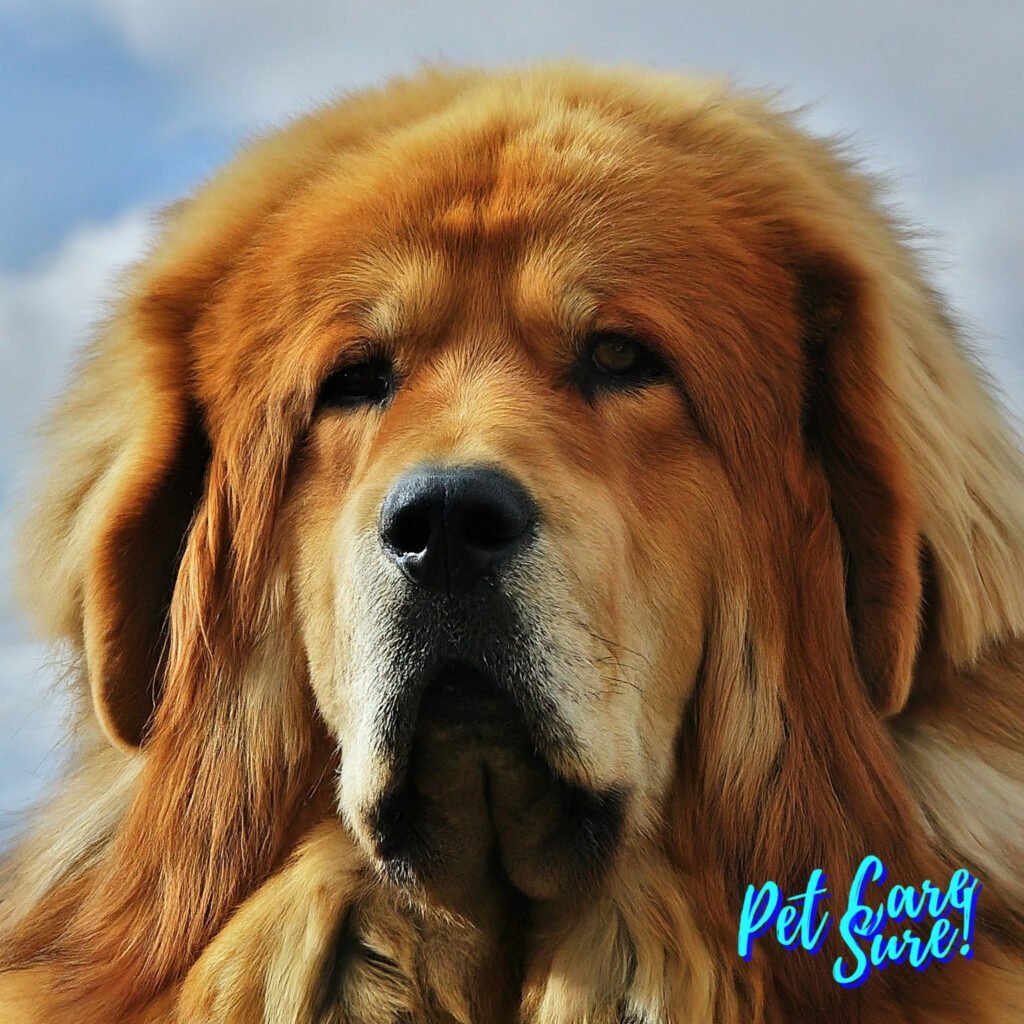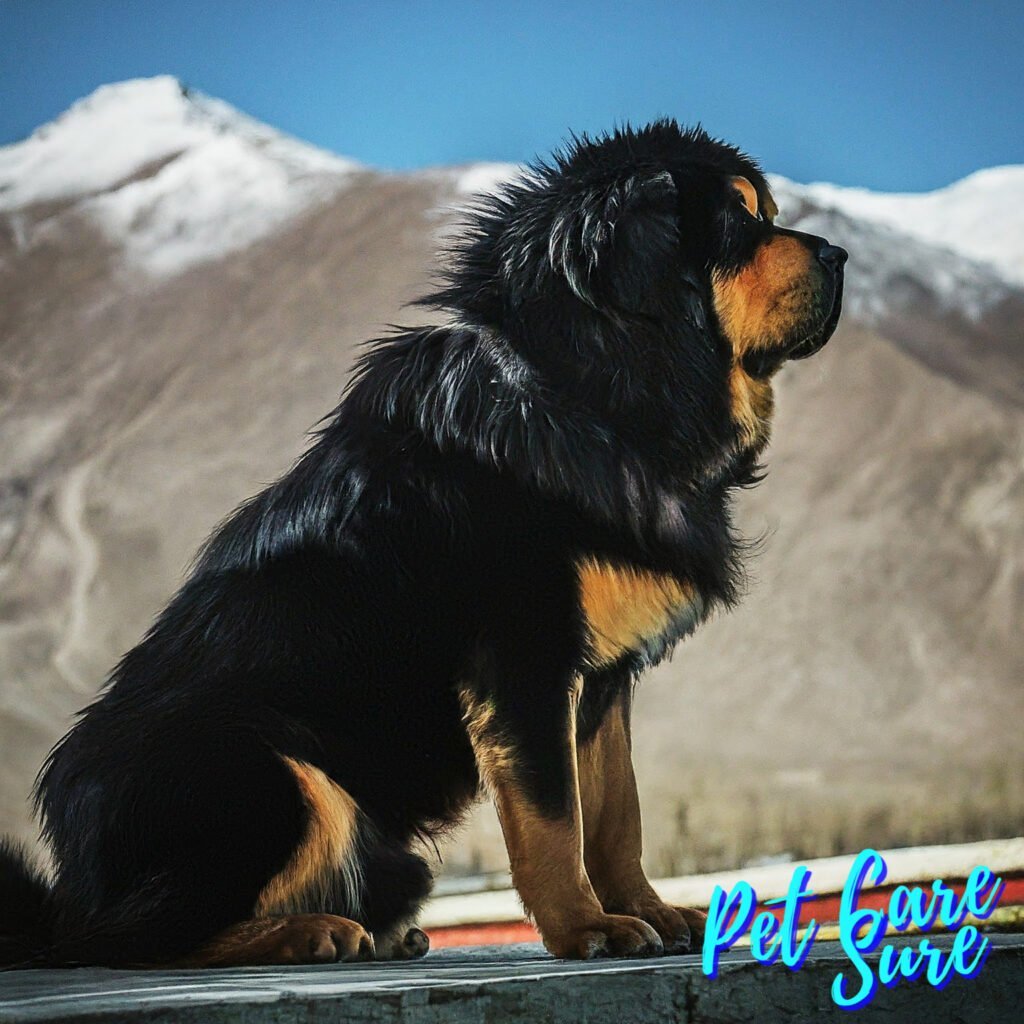
Owning a dog comes with significant costs. On average, caring for a large dog can cost around $1,570 per year, according to Forbes. Over a 12-year lifespan, this can total up to $22,000, and with additional expenses, the figure can soar to an astounding $83,000. However, some dog breeds are exceptionally costly right from the start. Here’s a closer look at the most expensive dog breed and what makes it so valuable.
What is the Most Expensive Dog Breed?
The Tibetan Mastiff is renowned as the most expensive dog breed globally. This breed, admired for its impressive size and regal demeanor, has achieved record-setting prices. In 2014, a Tibetan Mastiff puppy was purchased for close to $2 million at a luxury pet fair in China. The sale set a new benchmark for dog prices, with the puppy fetching 12 million yuan (approximately $1.95 million) from a property developer in Zhejiang province.
Earlier, in 2011, another Tibetan Mastiff puppy sold for $1.5 million, the most expensive dog ever sold at the time, according to NBC News.
Why is the Tibetan Mastiff So Expensive?
The Tibetan Mastiff’s high price tag can be attributed to several factors:
- Rarity and Demand: The breed’s rarity and high demand significantly boost its market value.
- Size and Appearance: Tibetan Mastiffs are notably large, with males weighing between 90 and 150 pounds and females between 70 and 120 pounds. Their impressive size and commanding presence make them particularly striking.
- Temperament: Known for their alertness, aloofness, and charismatic nature, Tibetan Mastiffs offer a unique companionship that appeals to certain buyers.
Characteristics of the Tibetan Mastiff
The Tibetan Mastiff is a good breed that excels at guarding and guarding. While they are affectionate with their family, they can be aloof with strangers. Their physical characteristics include a minimum height of 26 inches for males and 24 inches for females, adding to their imposing presence.
After all, the Tibetan Mastiff is not only the most expensive breed of dog, but also the most unique. Its impressive size, unique characteristics and rarity contribute to its high price, making it a pet for those who can afford it.
What are the top 10 most expensive dogs?
Fetching for a high price tag? These are the top 10 most expensive dog breeds and their average prices, according to Reader’s Digest:
- English bulldog: $4,250
- French bulldog: $4,250
- Tibetan mastiff: $4,000
- Chow Chow: $4,000
- Samoyed: $3,750
- Biewer terrier: $3,500
- Portuguese water dog: $3,500
- Greater Swiss mountain dog: $3,450
- Irish wolfhound: $3,250
- Newfoundland: $3,250
What is the least expensive dog?
Not every dog costs hundreds or thousands. If you rescue a dog, adoption fees range from $150 to $250, according to the Humane Rescue Alliance.
The North Shore Animal League America breaks down its adoption fees as follows:
- Puppies (up to 6 months): $375
- Adult dogs (over 6 months): $125
- Puppy mill rescues (over 6 months): $325
- Small breed and pure breeds (over 6 months): $325
Explore More:
A Glimpse into History: The Guardian of Tibet

The origins of the Tibetan Mastiff begin across the vast and rugged plateau of Tibet, where it was bred as a herding dog. For centuries these dangerous dogs were used by herders and Buddhist monasteries to protect them from predators such as wolves and leopards. In Tibetan culture the mastiff was not only a pet but also a symbol of strength and loyalty. Himalayan mythology also tells of Tibetan mastiffs standing at the gates of Shangri-La, the earthly paradise.
Modern times have moved on quickly and the breed has transformed from a working dog to a symbol of luxury, especially in China where owning a Tibetan Mastiff is seen as a status symbol. This change in perception along with its historical mystique has driven the value of this breed to astonishing heights.
How the Tibetan Mastiff Stacks Up Against Other Expensive Breeds
The Tibetan Mastiff is often the headliner when it comes to expensive dogs that are not alone in the elite of the canine world. For instance, a Samoyed with its cloud-like fur and permanent smile can fetch up to $14,000. Then there’s the Chow Chow, another breed of Chinese known for its lion-like mane and blue-black tongue, which can fetch around $11,000.
But why does the Tibetan Mastiff out-price these other breeds? The answer lies in its rarity, size and cultural prestige. The Samoyed may be adorable, and the Chow Chow may be cool, but neither has the massive presence or ancient heritage of the Tibetan Mastiff. It’s not just a dog; It is a part of history, a living relic of the Himalayas.
The Challenges of Breeding and Owning a Tibetan Mastiff

With great position comes great responsibility. Breeding a Tibetan Mastiff is not an easy task. Their rarity isn’t just the result of selective breeding—it’s also due to the breed’s specific needs and the challenges that come with maintaining genetic diversity. Breeders must carefully select pairs to avoid common health problems in the breed, such as hip dysplasia and thyroid problems.
Owning a Tibetan Mastiff is equally demanding. These dogs are not for the faint of heart. Imagine a dog that weighs the same as a small adult human and has the temperament of an experienced guardian. While they can be aloof and suspicious of outsiders, they are affectionate towards their family. Mr. Sharma, a Tibetan Mastiff owner, recalls how his mastiff, Tenzin, was passionately protective of his children. Tenzin did not allow strangers near the children. When we’re around him, he’s a loving giant, but when we’re not, he’s all business.”
Although comforting, this protective attitude requires vigilance on the part of owners. Tibetan Mastiffs require large spaces for movement as well as strong, dexterous hands for training. They need the freedom of a large yard and the self-control of a firm owner; They are not apartment dogs.
The Investment Value of a Tibetan Mastiff
Some people compare owning a Tibetan Mastiff to an extraordinary work of art. The first purchase price is just the beginning. A long-term investment is where the true value is found. Puppies from Tibetan Mastiff breeding can fetch thousands of dollars, making it a profitable breed. But this is not a get-rich-quick trick. It calls for understanding, tolerance and sincere love for the caste.
Like a high-end automobile or a fashionable watch, the Mastiff can be considered a status symbol even by individuals who do not intend to breed it. Owning a Tibetan Mastiff is considered a statement in some societies, signifying wealth, power and a relationship with something ancient and sacred.
A Unique Bond with a Unique Dog
The value of the Tibetan Mastiff ultimately outweighs financial considerations. It’s about the relationship that exists between a dog and its owner—a relationship rooted in tradition, developed through adversity, and fostered through respect. The easiest way to express it is this: “Owning a Tibetan Mastiff is not just about owning a dog,” says Ms.Li, the owner based in Beijing. It has to do with establishing a connection with tradition or heritage. He is more than just a pet; He is the protector of my home and my heart.
The Tibetan Mastiff, for those who can afford one, is a living link to a rich cultural history and a powerful, protective presence in their lives. Consequently its value is unparalleled.

Pingback: Top 5 Factors That Make Tibetan Mastiffs So Expensive - PETCARESURE
Pingback: Tibetan Mastiff Puppy Price in 2024: Latest Trends and Insights - PETCARESURE
Pingback: Logan Paul Pushes Dog Off Boat: Controversial Video Sparks Outrage and Reddit Backlash - PETCARESURE